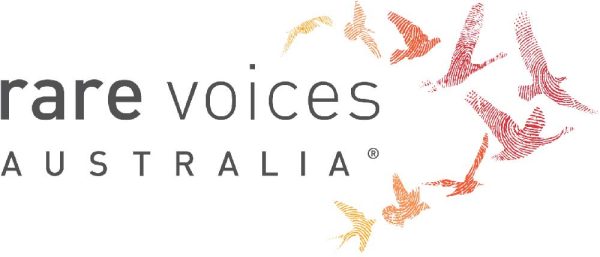Lafora disease
Quick Search
- Summary
- Synonyms and Classifications
- Symptoms
- Disability Impacts
- Cause and Inheritance
- Diagnosis
- Treatment
- Clinical Care Team
- Clinical Care Guidelines
- Emergency Management
- Research
- Rare Disease Organisation(s)
- Lived Experience
- Support Services and Resources
- Mental Health
- Other Information
- Useful Links for Healthcare Professionals
Summary
Lafora disease is a severe genetic and metabolic condition that affects the nervous system.1 It is a type of progressive myoclonic epilepsy, which are characterised by myoclonus (sudden, involuntary muscle spasm or twitch), epilepsy and cognitive decline (worsening of neurological functions). The symptoms of Lafora disease typically only begins during late childhood or adolescence and worsens over time (progressive).
Individuals with Lafora disease are unable to process glycogen (a source of stored energy) properly. Abnormal forms of glycogen, known as Lafora bodies, build up and form clumps in cells of the body, particularly in the brain. Over time, these Lafora bodies affect brain function and other systems of the body. This leads to seizures that worsen over time. It also gradually affects speech, memory, movement, and other functions and is also known as a type of childhood dementia disorder.

Synonyms and Classifications
Synonyms: epilepsy progressive myoclonic 2, Lafora body disorder, myoclonic epilepsy of Lafora, Lafora body disease, Lafora progressive myoclonic epilepsy, progressive myoclonic epilepsy type 2, progressive myoclonus epilepsy, Lafora type.
Universal rare disease classifications provide a common language for recording, reporting and monitoring diseases. Please visit the Rare Disease Classifications page for more information about these internationally recognised classifications.
Symptoms
Lafora disease is characterised by involuntary muscle twitches (myoclonus), generalised epilepsy and cognitive decline. Symptoms usually start during adolescence between 8-19 years old.
Initial symptoms may include headaches, learning difficulties and seizures. There may be different types of seizures, such as:
- Myoclonic seizures – sudden muscle spasms or twitch that appear like a jerking movement due to abnormal brain activity. This is the most common type of seizures experienced by individuals with Lafora disease.
- Absence seizures – episodes of blanking out or staring into space
- Atonic seizures – seizures that result in temporary loss of muscle tone, resulting in the body or parts of the body going limp
- Focal occipital seizures – seizures involving the occipital lobe (part of the brain responsible for visual processing); this can cause visual hallucinations, temporary vision loss, abnormal eye movements and other symptoms.
Over time, these seizures become more severe and harder to control and can lead to status epilepticus (continuous convulsions), which is a medical emergency and can be life-threatening. Individuals also experience loss of motor skills affecting their balance, coordination, ability to walk, and abnormal muscle contraction (spasticity). They may become confused and experience cognitive decline, affecting their ability to speak and progressing to dementia.
Please speak to your medical team to learn more about the signs and symptoms of Lafora disease.
Disability Impacts
Rare diseases are often serious and progressive, exhibiting a high degree of symptom complexity, leading to significant disability. Majority of the estimated two million Australians living with a rare disease meet the Australian Government’s definition for disability (in accordance to the Australian Public Service Commission and Australian Bureau of Statistics), and many experience severe and permanent disability impacts. If you or someone you care for is experiencing disability-related impacts from a rare condition, please speak with a health or disability professional for advice. Information about relevant disability support can be found at the RARE Portal’s Disability Support Information page.
Cause and Inheritance
Lafora disease is a genetic condition caused by disease-causing genetic changes (variants) in the genes EPM2A or EPM2B (NHLRC1) on chromosome 6.4 These genetic variants include single base changes (sequence variants/ a single letter changes in the genetic code) and deletions. For more information on different types of genetic variants, please refer to Centre for Genetics Education: Types of genetic variation.
All individuals have two copies (alleles) of the EPM2A or EPM2B genes, one on each chromosome inherited from each parent. Lafora disease is an autosomal recessive condition – a genetic variant in both of either EPM2A or EPM2B (NHLRC1) gene copies can result in Lafora disease.5
If you would like to learn more about the inheritance and impact of this condition, please ask your doctor for a referral to a genetic counsellor. Genetic counsellors are qualified allied health professionals who can provide information and support regarding genetic conditions and testing. More information about genetic counselling can be found at:
- Information on Genetic Services
- The National and State Services pages underneath the ‘Genetic Counselling’ sections listed
Diagnosis
There are no published consensus clinical diagnostic criteria for Lafora disease.
A diagnosis of Lafora disease may be suspected in children or teenagers that are previously healthy but start to exhibit characteristic symptoms such as seizures and progressive cognitive decline. More information about clinical features that may warrant a diagnosis of Lafora disease to be considered, can be found at GeneReviews®: Lafora disease (under Establishing the Diagnosis).
The diagnosis is usually confirmed by genetic testing. A skin biopsy may be done to look for Lafora bodies, but may not always be accurate or specific enough for diagnosis.3,9
As part of the diagnostic process, doctors may do a differential diagnosis, where they rule out other conditions that have similar symptoms, such as juvenile myoclonic epilepsy, myoclonic epilepsy with ragged red fibers, schizophrenia, sialidosis, subacute sclerosing panencephalitis and Unverricht-Lundborg disease.
Please speak to your medical team to learn more about the available diagnostic pathways for Lafora disease.
Treatment
There is currently no curative treatment for Lafora disease. Treatment is targeted at symptomatic management, reduce complications and improve quality of life, which involves a multidisciplinary care team. This may include medication to manage seizures and myoclonus, physiotherapy and occupational therapy to help maintain mobility for as long as possible, and psychosocial support for individuals and families.2,3
Please speak to your medical team to learn more about the possible treatment or management options for your condition. Treatment will depend on an individual’s specific condition and symptoms. It is also important to stay connected to your medical team so that you can be made aware of any upcoming clinical trial opportunities.
Clinical Care Team
Clinical care for rare diseases often involves a multidisciplinary team of medical, care and support professionals. Please note that the information provided here is as a guide and that RVA does not necessarily monitor or endorse specific clinics or health experts.
Healthcare professionals involved in the care of individuals with Lafora disease may include general practitioners (GP), neurologists, geneticists, physiotherapists, occupational therapists, psychologists and others.1 The need for different healthcare professionals may change over a person’s lifetime and extend beyond those listed here.
Clinical Care Guidelines
We are not aware of any clinical care guidelines for Lafora disease in Australia or internationally. If you know of any relevant care guidelines, please let us know via the Contribute page.
Emergency Management
Individuals living with rare diseases may have complex medical issues and disabilities, which are not always visible. It is often useful to refer to their medical history as well as personal information such as a medical card, doctor’s letter, or if available, a rare disease passport, for relevant information.
Research
There are specific considerations around participating in rare disease research, including clinical trials. It is important to be mindful of issues such as data privacy, research ethics, consent and differences in research regulations between Australia and other countries.
If you are interested in finding clinical trials for your condition, please visit the following websites; however, there may not be any clinical trials available:
It is best to discuss your interest in any clinical trials with your medical team to determine suitability and eligibility.
Please note that RVA does not necessarily monitor or endorse each group/organisation’s operational governance and activities.
Rare Disease Organisation(s)
We are not aware of any rare disease organisations for Lafora disease in Australia. If you are aware of any Australian organisations, please let us know via the Contribute page.
International Organisation:
Chelsea’s Hope: Lafora Children Research Fund (United States of America)
Website: https://www.chelseashope.org/
Please note that RVA does not monitor or endorse each group/organisation’s operational governance and activities. When engaging with a group, please consider the information on the RARE Portal’s Finding Helpful Peer and Community Supports page.
Lived Experience
Lafora disease varies between individuals, and each person’s experience is unique.
Chelsea’s Hope: The Children of Chelsea’s Hope has personal stories of people living with Lafora disease.
If you would like to share your personal story with RVA, please visit the Rare Voices Australia: Share Your Story page. RVA will consider your story for publishing on our website and inclusion on the RARE Portal.
Support Services and Resources
For information on available government and social services that provide support for individuals with a rare disease, please visit the National and State Services pages.
Mental Health
People living with a rare disease, including families and carers, often face unique challenges such as diagnostic delays, misdiagnoses, limited treatment options, and limited access to rare disease specialists and support. These challenges may impact people’s emotional wellbeing and quality of life. Many people find it helpful to seek mental health and wellbeing support to cope with ongoing stress and uncertainty. Connecting with people who have shared experiences through a support group may also be helpful. Information about relevant mental health and wellbeing support can be found at:
- Mental Health and Wellbeing Support for Australians Living with a Rare Disease
- The National and State Services pages underneath the ‘Mental Health’ sections listed
Other Information
Further information relevant to Lafora disease can be found at:
Useful Links for Healthcare Professionals
Online Mendelian Inheritance in Man, OMIM®:#254780, Myoclonic epilepsy of Lafora 1
Online Mendelian Inheritance in Man, OMIM®:#620681, Myoclonic epilepsy of Lafora 2
References
- Genetic and Rare Diseases (GARD) Information Center. Lafora disease. Accessed 20 August 2025. https://rarediseases.info.nih.gov/diseases/8214/lafora-disease
- National Organisation for Rare Disorders (NORD). Lafora disease. Updated 31 May 2023. Accessed 4 August 2025. https://rarediseases.org/rare-diseases/lafora-disease/
- Orphanet. Lafora disease. Accessed 20 August 2025. https://www.orpha.net/en/disease/detail/501
- Ianzano L, Zhang J, Chan EM, Zhao XC, Lohi H, Scherer SW, Minassian BA. Lafora progressive Myoclonus Epilepsy mutation database-EPM2A and NHLRC1 (EPM2B) genes. Hum Mutat. 2005;26(4):397. doi: 10.1002/humu.9376. PMID: 16134145.
- Online Mendelian Inheritance in Man, OMIM®. Johns Hopkins University, Baltimore, MD. #254780 – Myoclonic epilepsy of Lafora 1. Updated 15 June 2014. Accessed 25 August 2025. https://omim.org/entry/254780#27
- Online Mendelian Inheritance in Man, OMIM®. Johns Hopkins University, Baltimore, MD. #620681 – Myoclonic epilepsy of Lafora 2. Updated 17 Jan 2024. Accessed 25 August 2025. https://omim.org/entry/254780#27
- Minassian B. Progressive Myoclonus Epilepsy, Lafora Type. 2007 Dec 28 [Updated 2025 Jan 23]. In: Adam MP, Feldman J, Mirzaa GM, et al., editors. GeneReviews® [Internet]. Seattle (WA): University of Washington, Seattle; 1993-2025. Accessed 20 August 2025. https://www.ncbi.nlm.nih.gov/books/NBK1389/
- Turnbull J, Tiberia E, Striano P, et al. Lafora disease. Epileptic disorders. 2016;18(S2),38–62. https://doi.org/10.1684/epd.2016.0842
- Sathiah P, Gochhait D, Dehuri P, Subramanian H. (2017). Diagnosis of Lafora Disease by Skin Biopsy. J Clin Diagn Res. 2017;11(9), EJ01–EJ02. https://doi.org/10.7860/JCDR/2017/28570.10552
Contributors
This page has been developed by Rare Voices Australia (RVA)’s RARE Portal team.
If you are aware of any additional information that may benefit stakeholders with an interest in this page, or if you notice any broken links or inaccurate information, please let us know via the Contribute page.

